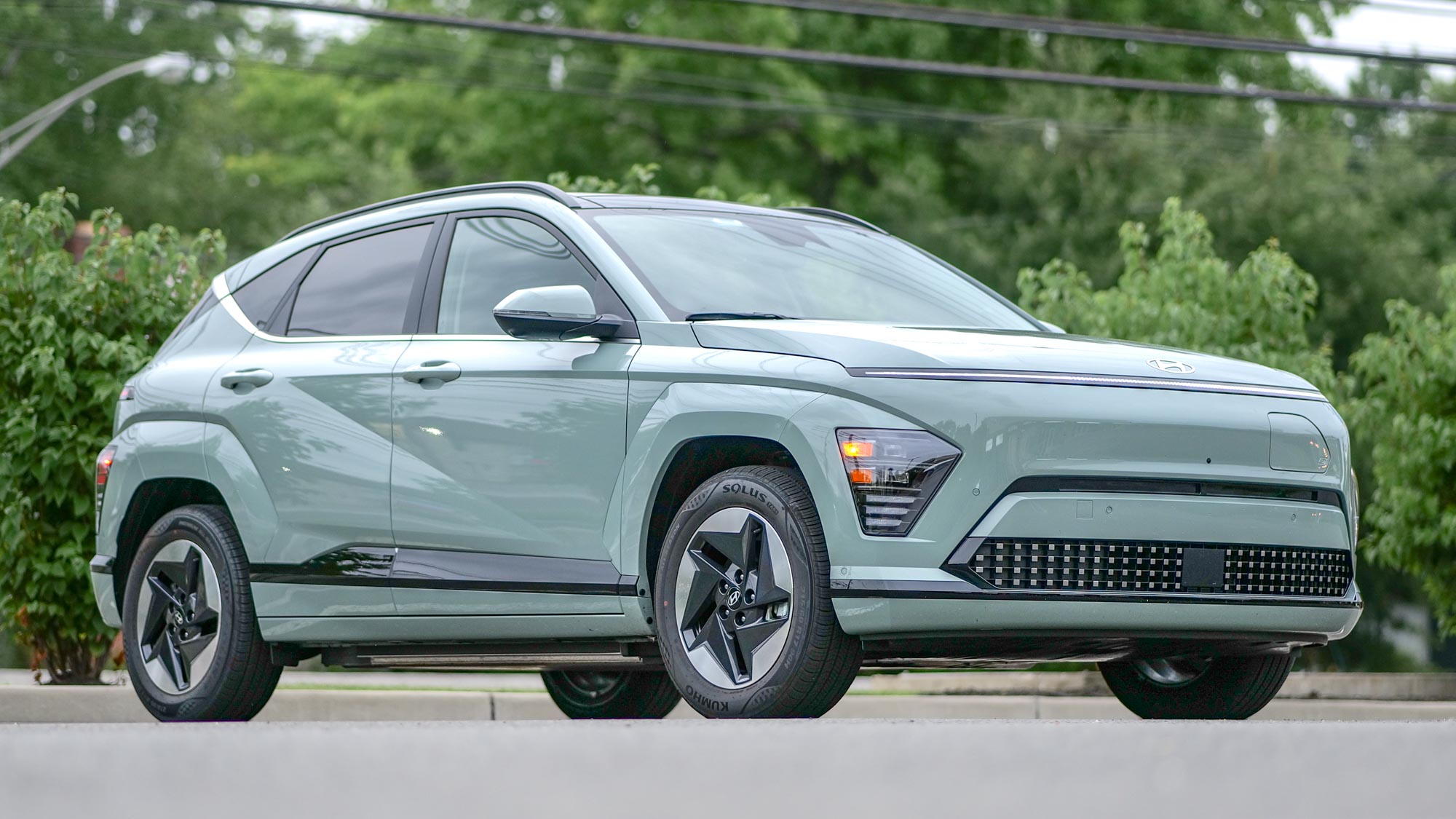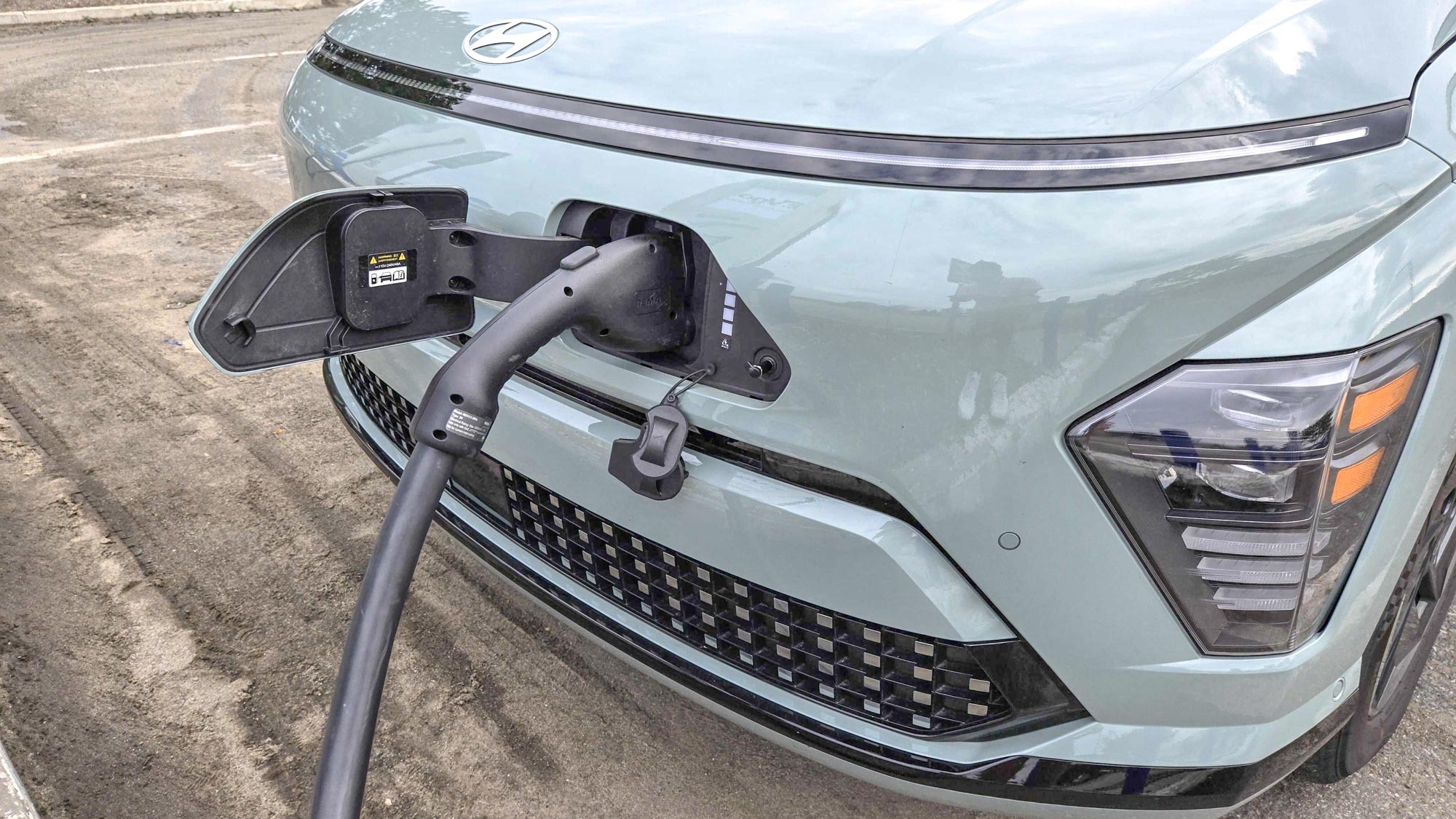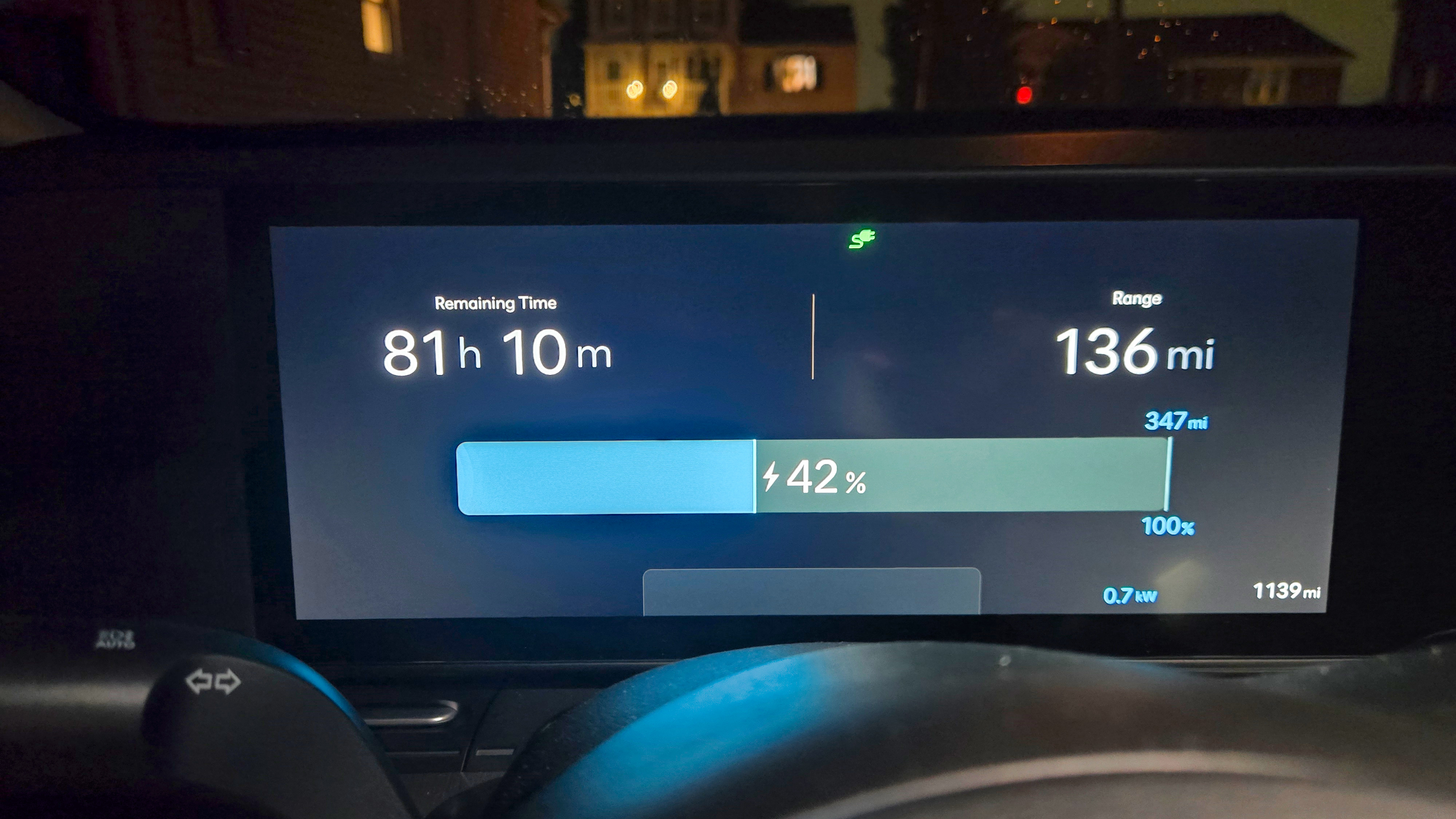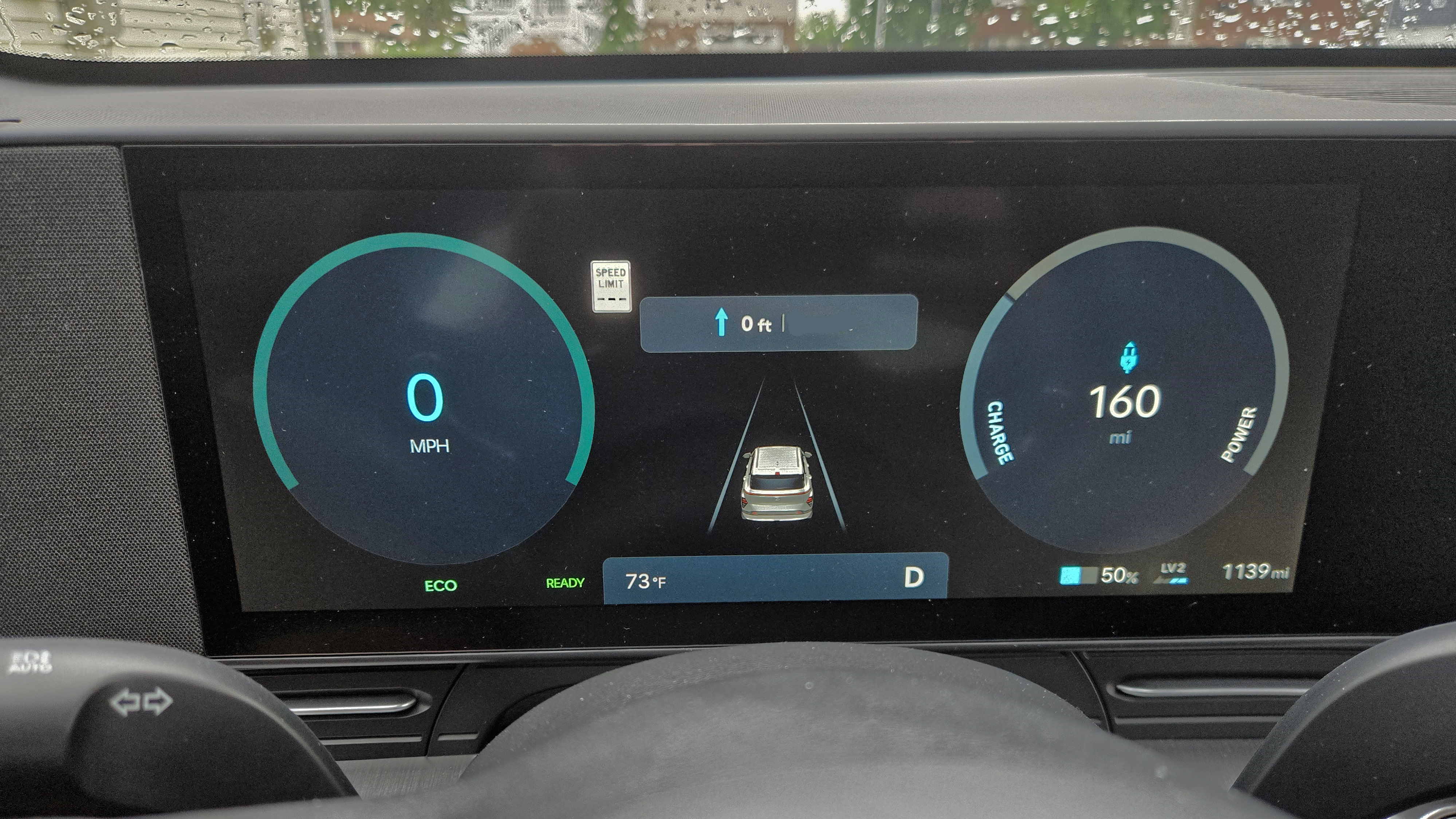
One of the EVs that I’ve been test driving of late is the Hyundai Kona Electric. It’s a charming sub-compact SUV that gets my attention largely for its affordable cost, which at an asking price of $33,000 for the base SE model, makes it one of the cheapest electric cars you can buy right now. That balloons up to $42,000 for the Kona Electric Limited trim that I’m test driving, which benefits from having more premium features and a longer range of 261 miles.
Car buyers might be tempted by the Kona Electric, but they need to be aware about the other stuff that goes into buying their first EV. I’m referring to how they’re charged at home, seeing that they might not be inclined to invest yet more money out of their pocket for a faster charger. That’s because depending on where you live, a permit may be required in order to install a Level 2 charger.
While there are certainly greater benefits with a Level 2 charger at home, Level 1 charging is always an option for any new EV owner right from the onset — since it relies on your standard 120V outlet. I charged the Hyundai Kona Electric overnight with Level 1 charging, so here’s what I found out.
You’re looking at several days for a full charge

Using the Level 1 charger that comes with the Kona Electric, it showed a remaining time of 81+ hours before it would get to a full charge from 42%. Unless you work from home primarily, this wouldn’t be feasible — nor would it be good for your electric bill at the end of the month. That’s because chances are your electric rates are substantially higher during peak hours than what they are overnight.
In contrast, a Level 2 charger would take 6 hours and 5 minutes to go from 10% to 100% according to Hyundai. Depending on how much you drive daily, you might not end up having to charge it nightly — which is why Level 2 is the preferred option. Charging on Level 1 with the Kona Electric is the least efficient method of charging, but it’s the most accessible.
Charging range overnight could be enough


Still, that’s my only option at home. When I plugged in the charger, it showed a battery level of 42% with a range of 136 miles. After 10.2 hours of charging overnight, it added back 24 miles of range — bringing up to a level of 50%. That’s a rate of about 0.78% per hour, which would more than likely lessen the closer it gets to a full charge.
It’s roughly 6.2 miles roundtrip for my commute, so the 24 miles of range added back to the Kona Electric I got from overnight charging is more than suitable.
But despite this, that would be more than enough for my daily commute to the train station. It’s roughly 6.2 miles roundtrip for me, so the 24 miles of range added back to the Kona Electric I got is more than suitable for my commute. If your commute is longer, then your best chance at reducing your charging cost would be to go to a charging station during off-peak hours to get the best rates.
With the help of EV charging station apps, you can also find places that charge a fraction of the cost that popular nationwide charging stations offer — like EVgo and Electrify America, which can easily exceed over $0.50/kWh. I ended up finding a charging station that charges at the rate of $0.29/kWh, which is incredible because it was a 62.5 kW charger.
The Hyundai Kona Electric Limited has a 64.8 kWh battery, which would end up costing $18.80 to charge fully from 0% to 100%. If I were to do the same charging at one of the popular nationwide stations, like EVgo, it would end up costing $32.40. Those two totals have a wide margin, which is why it’s important to find charging stations near you that have lower rates.
Nevertheless, you’ll get even better rates at home. With a nationwide average of $0.17/kWh for residential electricity, getting a full charge with the Kona Electric would cost a smidge over $11. While I understand that Level 1 charging is far more accessible, investing in a Level 2 would be the most practical option for long term savings.







